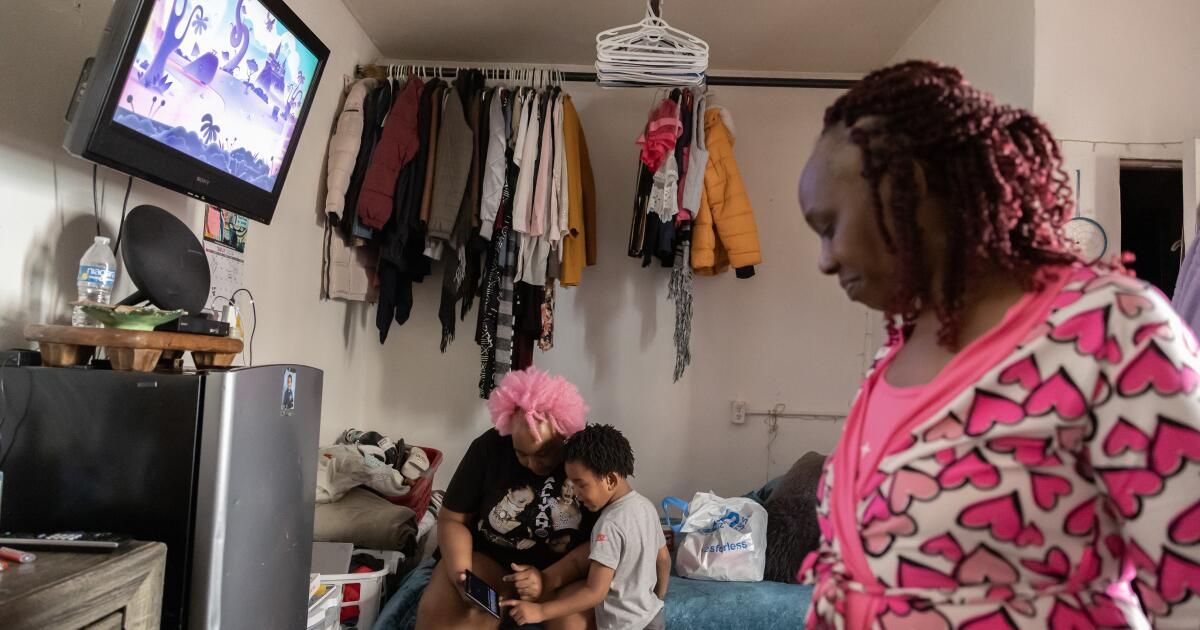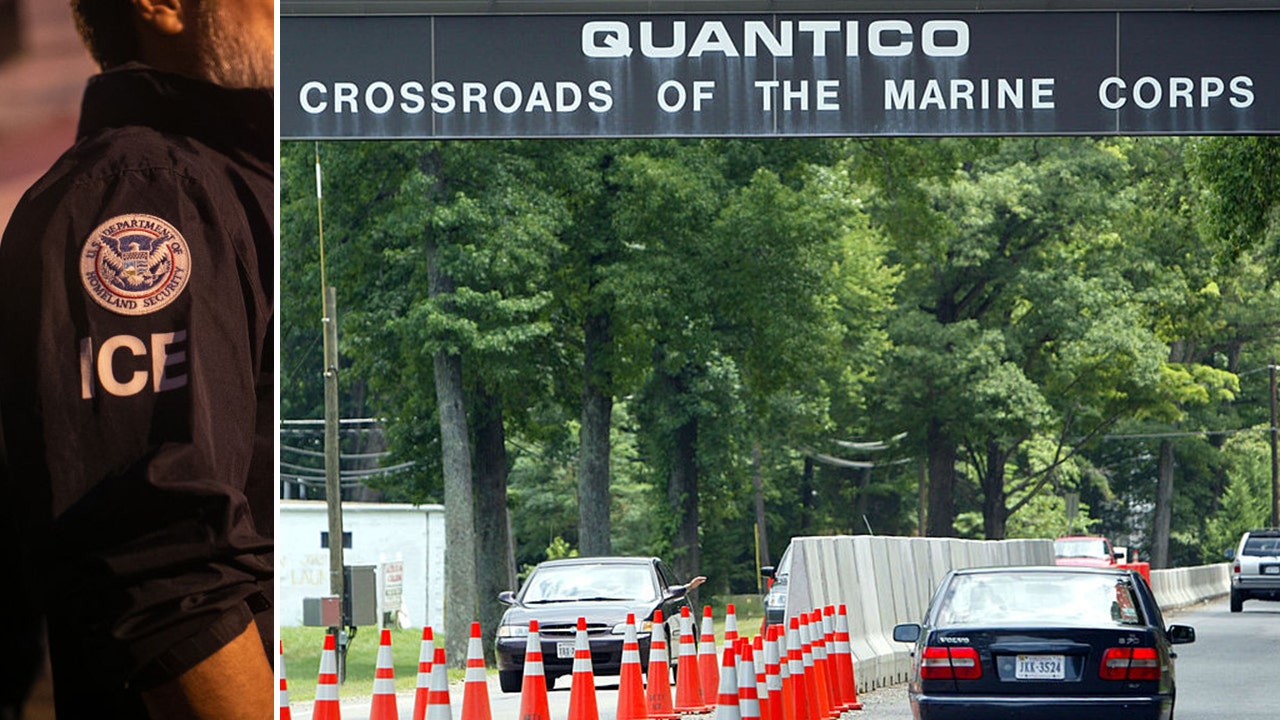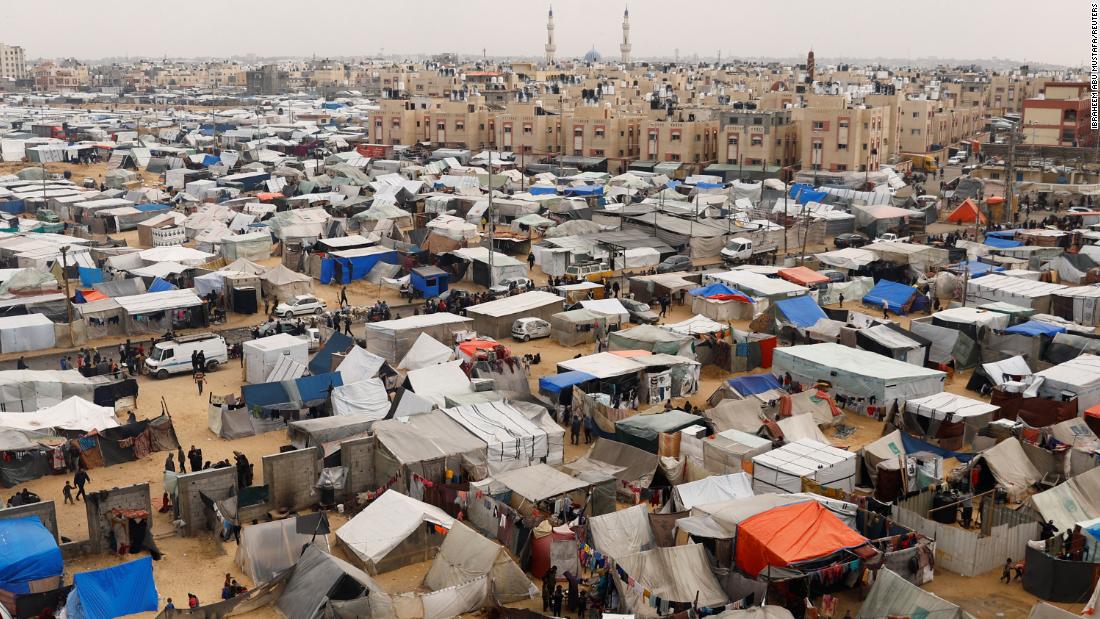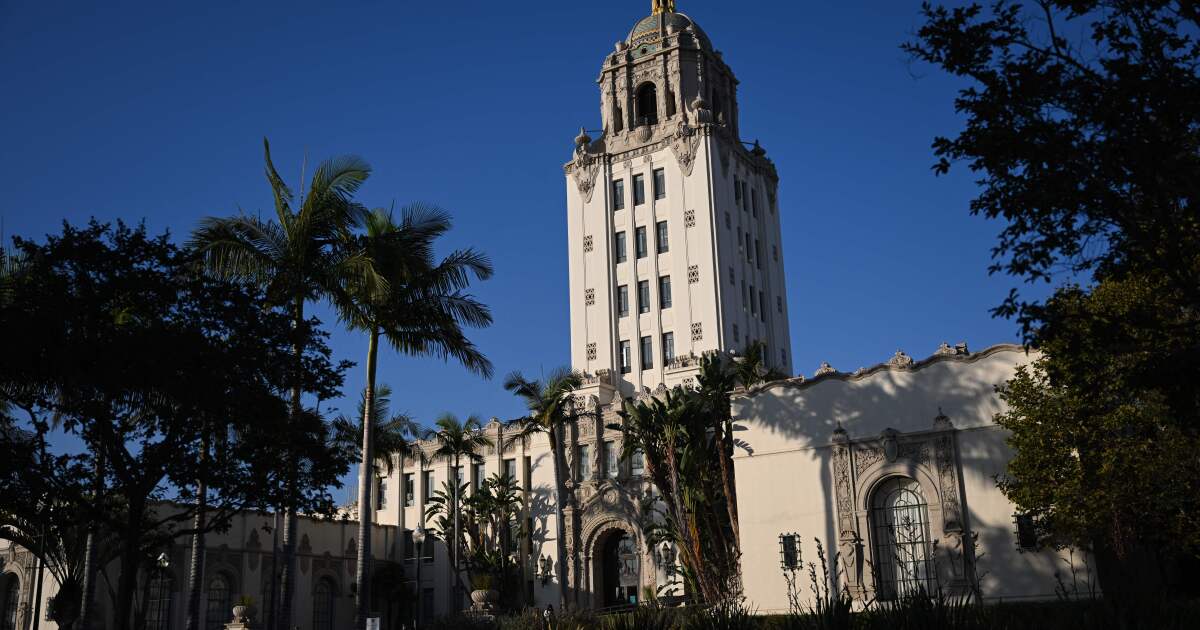Daviell McKinley and his neighbors say they have not had hot water in months in their South Los Angeles apartment building.
There is mould in the bathrooms and bedrooms. Rats are running riot in the shared kitchen, which is covered in excrement. Cockroaches have taken up residence in holes in the kitchen table.
Most residents of the more than 30 units at 5700 S. Hoover St. use shared facilities. There are only two functioning community bathrooms for residents, one of which has no working light, and only two community showers.
Months ago, as conditions worsened, McKinley began searching the Internet. She contacted city officials, filed complaints and sought advice.
While looking up the building's address, he was shocked to learn that this is not the first time residents here have faced slum-like conditions.
1
2
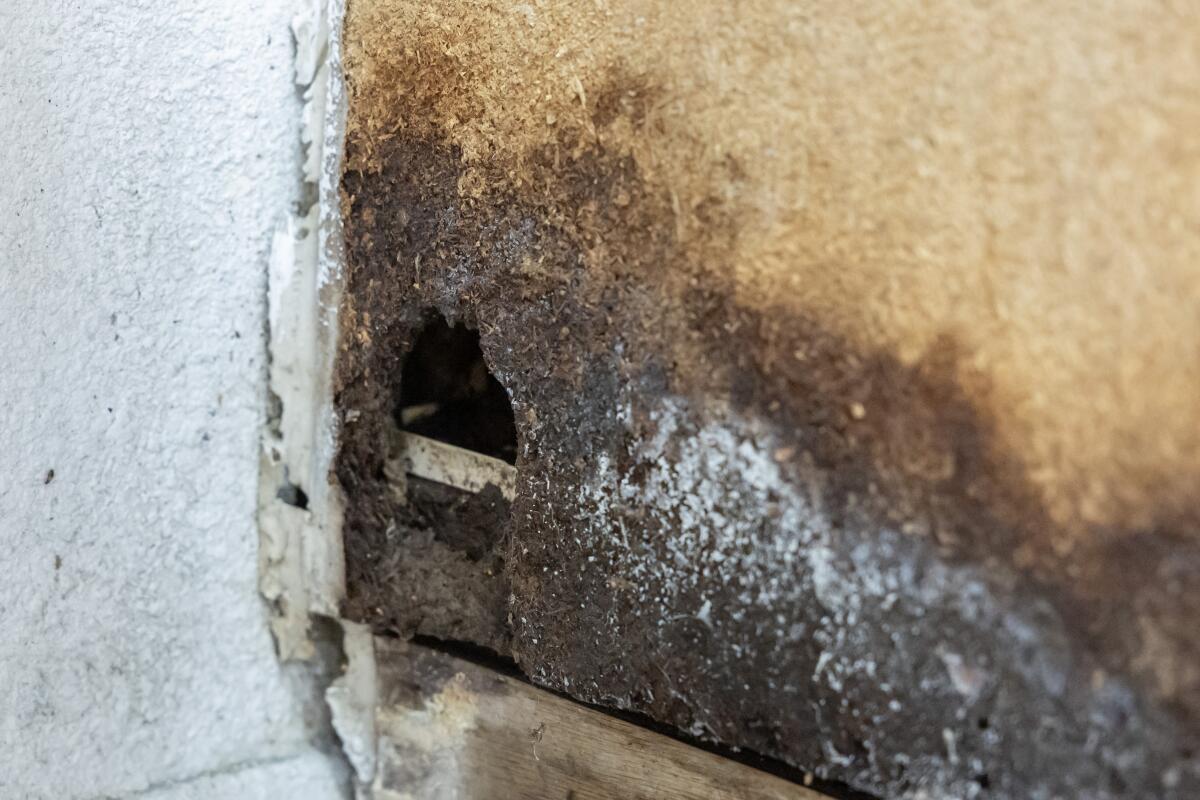
3
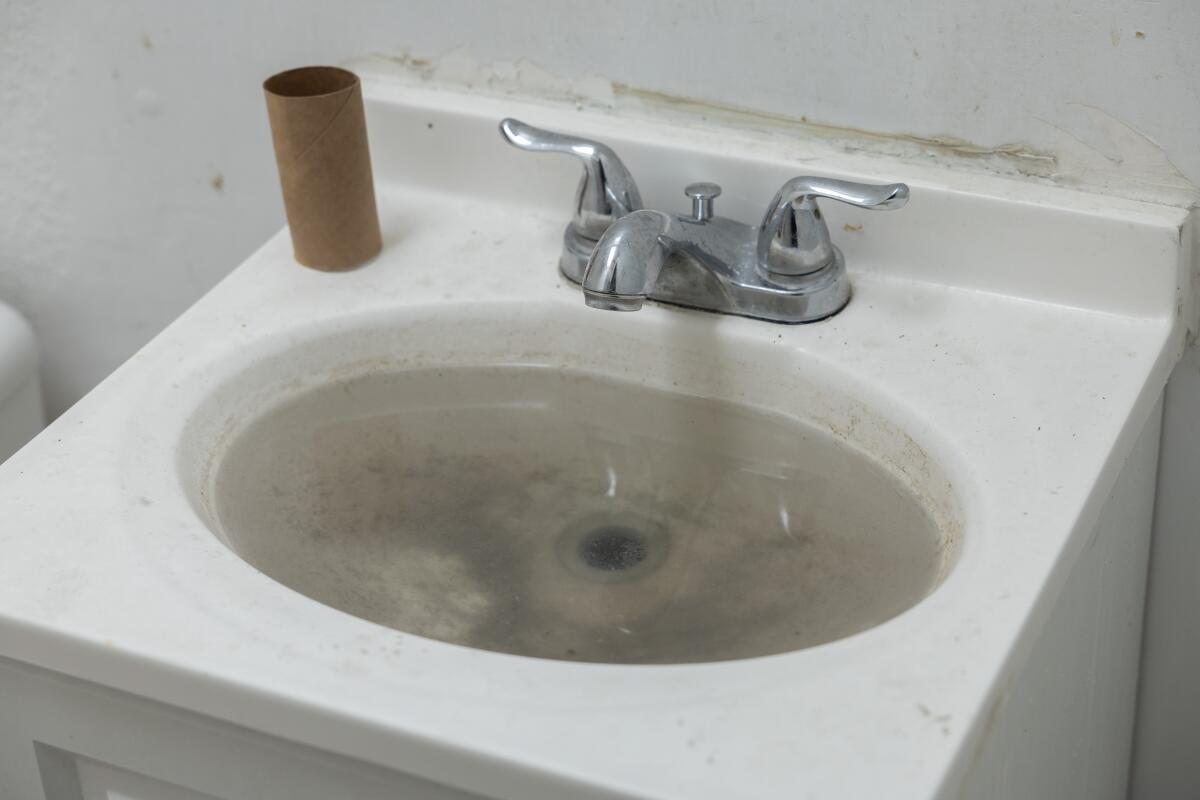
1. Peeling drywall in a bathroom. 2. A hole made in a kitchen cabinet. 3. A clogged sink in a community bathroom. (Myung J. Chun/Los Angeles Times)
Ten years ago, the city evicted tenants from the building amid similar complaints that it had become substandard and dangerous. At the time, residents said authorities should have acted sooner to remove them.
Now, residents say, it's happening again.
“I don’t know who to call for help,” McKinley said. “I’ve tried calling the health department, the mayor’s office… There has to be someone who knows that this building should never have been reopened. How could it have been reopened and people allowed to settle in here?”
City officials said they are aware of the situation and have been working to find a solution with the property's owner, 5700 Hoover Partners, an affiliate of Soul Housing, which provides temporary housing for homeless residents in Los Angeles County.
Eric Schames, chief operating officer for Soul Housing, said the company is committed to relocating residents after purchasing the property from its previous owner in a bankruptcy sale, unaware that there were dozens of people living inside. He said he knows the building is in disrepair. The hot water has been running intermittently for the past few months and has been on since last week, when a plumber made some repairs, he said.
“It broke several times and we brought in the plumbers,” he said. (Residents said Monday that hot water was still not working.)
In a statement, City Councilman Curren Price said his office has reported numerous violations to the Los Angeles Department of Housing and the Department of Building and Safety.
“My office has strongly urged the property owner to immediately rectify this situation and pay the relocation fees imposed by the Department of Housing. We have made it very clear that if they fail to meet these obligations, the city will have no choice but to take appropriate action, which would result in the imposition of a lien on the property,” Price said in a statement.
Following that initial response to The Times’ questions about the property and its condition, Price’s office sent a follow-up statement on Friday saying it had negotiated an agreement with the property owner to provide the tenants with relocation fees totaling about $500,000 so they can leave the building permanently.
Sharon Sandow, a spokeswoman for the Housing Department, said the agency had no records of referrals or complaints about the lack of hot water at the property.
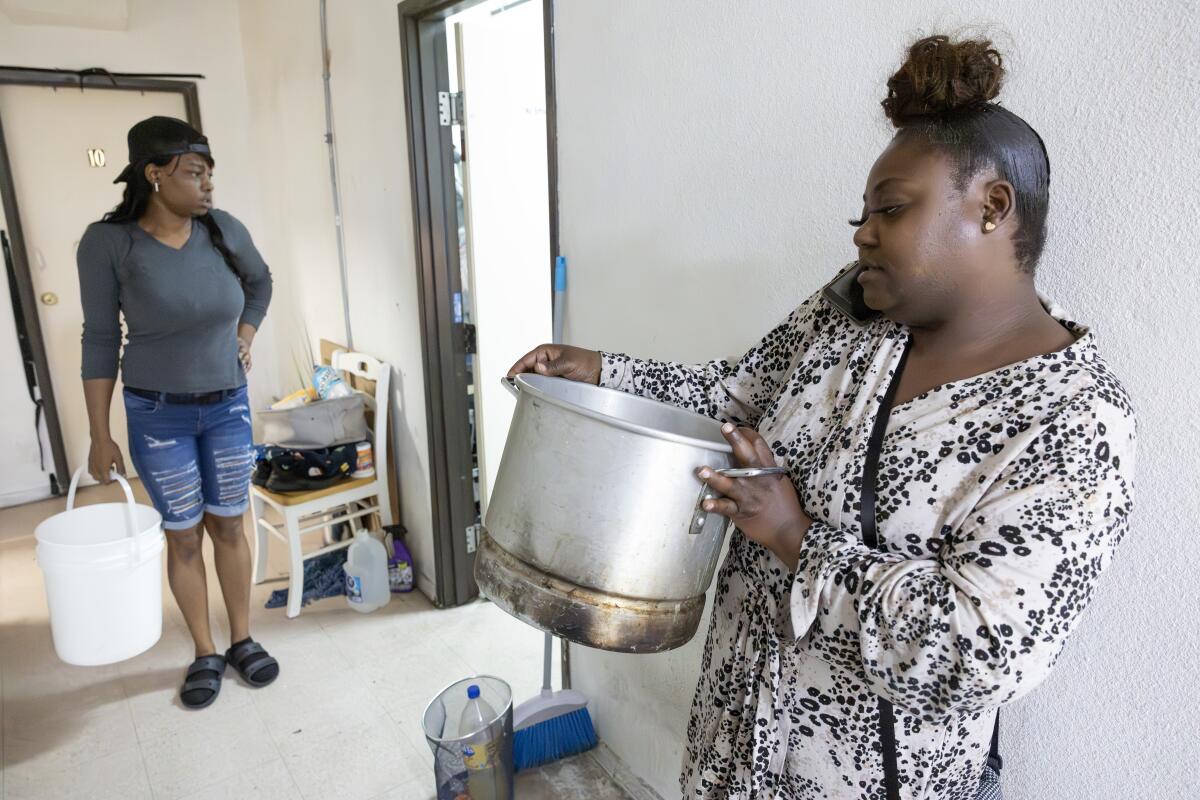
Daviell McKinley, left, and Charlotte Arnold are among residents using buckets and pots to heat and collect hot water on the kitchen stove.
(Myung J. Chun/Los Angeles Times)
Sandow said the Department of Building and Safety could answer questions from The Times on other issues, but officials there did not respond.
“LAHD last had contact with the landlord in February 2024 and provided basic information about relocation assistance that may be available to tenants,” Sandow said in a statement.
The dark brown building, which looks like an old office complex with a small courtyard in the centre, was once a hospital. It was later converted into offices before finally becoming a home.
In October 2013, city officials declared it “substandard” and said it was being illegally occupied. They ordered the owner to stop using it for residential purposes, The Times reported. But it wasn’t until March of the following year that the Fire Department ordered the building vacated. City officials at the time said the delay was due to due process procedures, according to the Times report.
In 2015, the building received a certificate of occupancy that changed its use from offices to a “philanthropic institution” and allowed for up to 17 bedrooms, according to online building and security records.
In July 2018, a city inspector again declared the building deficient “due to illegal occupancy as a dwelling,” records show. Shortly afterward, it was found to be in compliance. In 2021 and 2022, the city received six complaints saying the building had again been converted to a use that was not permitted.
In March, inspectors again found the building to be “substandard,” this time due to dangerous plumbing and a lack of “hot and cold running water,” records show. Inspectors also found missing or disabled carbon monoxide alarms, unauthorized work and “unauthorized occupancy” because the building had 33 rooms instead of 17.
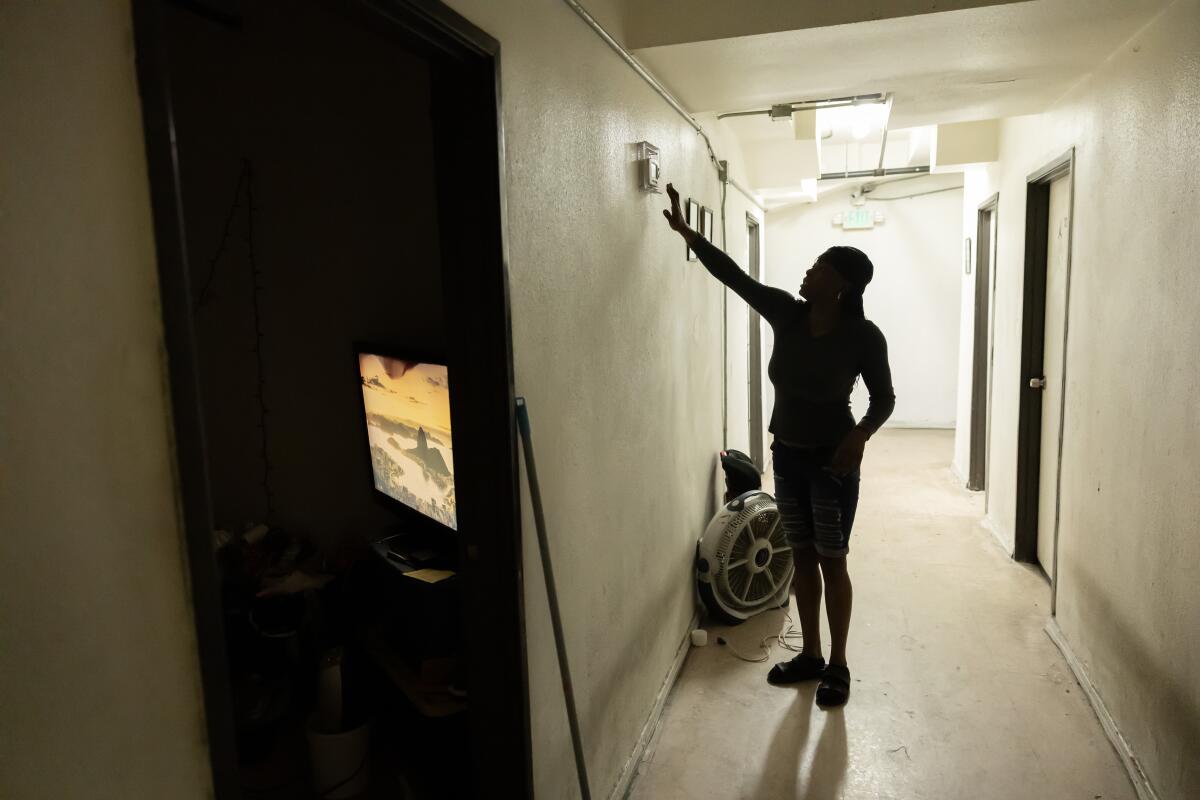
Daviell McKinley, who has lived at 5700 S. Hoover St. for three years, points to the climate control unit that he said is not working.
(Myung J. Chun/Los Angeles Times)
Residents say the building had been deteriorating for some time and that it got worse in recent months. Online property records show the building was purchased in 2019 by Megna Real Estate Investments Inc., which sold it in November to 5700 Hoover Partners.
Schames said the company purchased the building believing there were nine squatters living inside.
“We arrived and there were over 50 people,” she said. As housing providers, “the last thing we want to do is displace them.”
After fixing up the building, he plans to use it for patients who are discharged from hospitals and have nowhere else to go.
“The intention was always to do a major renovation,” he said.
Last week, she said, the company learned of the Housing Department's decision that 41 people were to receive relocation fees — about $13,000 for individuals and nearly $25,000 for families. Within hours, the company agreed to do so, she said.
“To this day, we do not have a single document proving that anyone who is there has a right to be there, but we are relying on the word of the Department of Housing,” he said. “Our goal and our mission has always been to house those in need of housing.”
Several residents told The Times they have lived in the building for years. Some shared photos of the building dating back years. Others shared documents, including a 2019 lease and a request for pandemic rent relief.
On a recent afternoon, Tarhjia Easterly, 54, who lives in a room with her daughter and 4-year-old grandson, was boiling water for the boy’s bath. Easterly, a former catering worker who has been unable to work because of epilepsy, has set up a makeshift kitchen outside her room, with a portable electric stove on a plastic table, because the shared kitchen is so unsanitary, she said.
The building is no place for anyone, let alone a child, she said. But several children live there, along with her grandson.
McKinley, who works as a security guard, said she moved into the building in 2021, when she was desperate to keep a roof over her head. She had fled domestic violence and was homeless. She paid $650 a month for her room. Since then, she has watched in despair as conditions grew worse and worse.
Residents have not paid rent since the new owner took over, and no one has asked them to, McKinley said. They previously paid between several hundred dollars and nearly $1,000 a month, depending on the amenities: A few rooms have bathrooms and some have showers.
On Monday, McKinley said he had not heard back from city officials about the $500,000 settlement with the landlord and questioned whether that amount would be enough.
“Leave and start over to get an apartment with the cost of living here in Los Angeles?” he said. “That’s not going to get you anywhere.”

